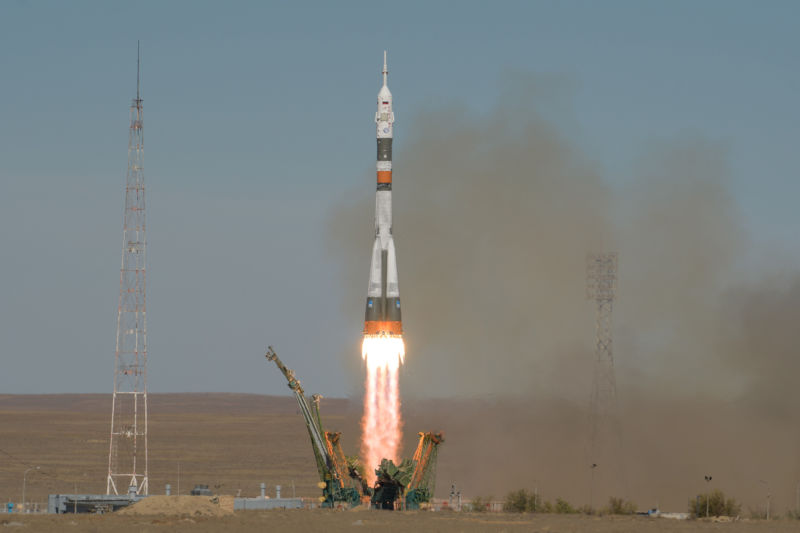A Soyuz crew makes an emergency landing after rocket fails
Ars Technica » Scientific Method 2018-10-11

Enlarge / A Soyuz rocket launches with Expedition 57 Flight Engineer Nick Hague of NASA and Flight Engineer Alexey Ovchinin of Roscosmos, Thursday, October 11, 2018. (credit: NASA)
On Thursday in Kazakhstan, at 4:40am EDT, a Soyuz rocket took off carrying NASA astronaut Nick Hague and Russian cosmonaut Aleksey Ovchinin toward the International Space Station. The ascent proceeded normally until the separation of one of the rocket's booster stages, by which point the crew had already experienced microgravity.
Because the Soyuz spacecraft did not reach orbit at the point of this booster failure, the crew was forced to make a rapid ballistic descent likely under high g-forces. After about 20 minutes of uncertainty, Russian officials confirmed the crew were ok and had landed about 20km east of Dzhezkazgan, a city in central Kazakhstan. As rescue crews arrived, Hague and Ovchinin were reported in "good condition" and found out of the capsule.
Little additional information has been provided. Roscosmos, the Russian firm that operates the nation's space agency and is responsible for Soyuz launches, will not hold any news conferences today. The head of Roscosmos, Dmitry Rogozin, said a state commission has already been established to study the accident.